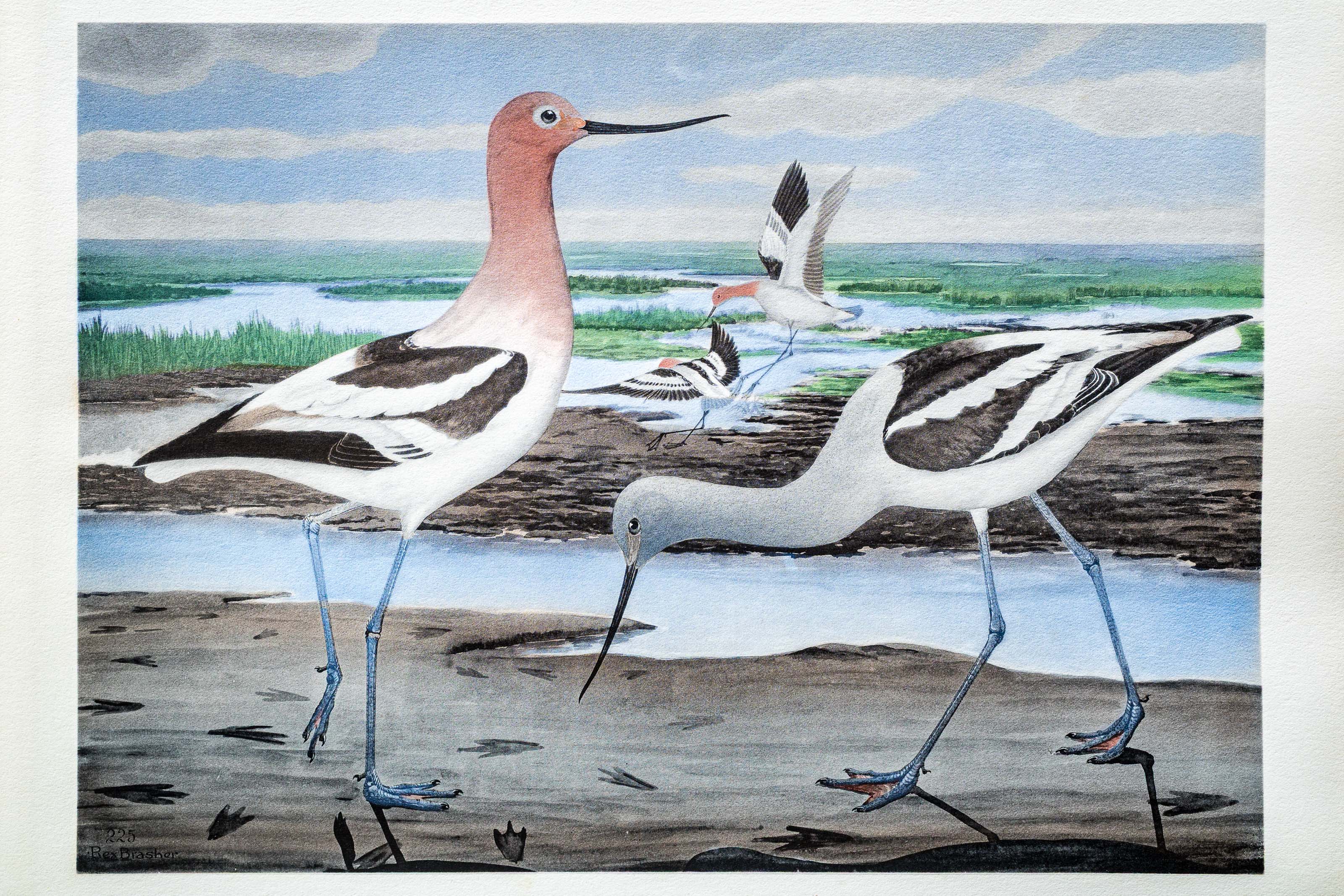
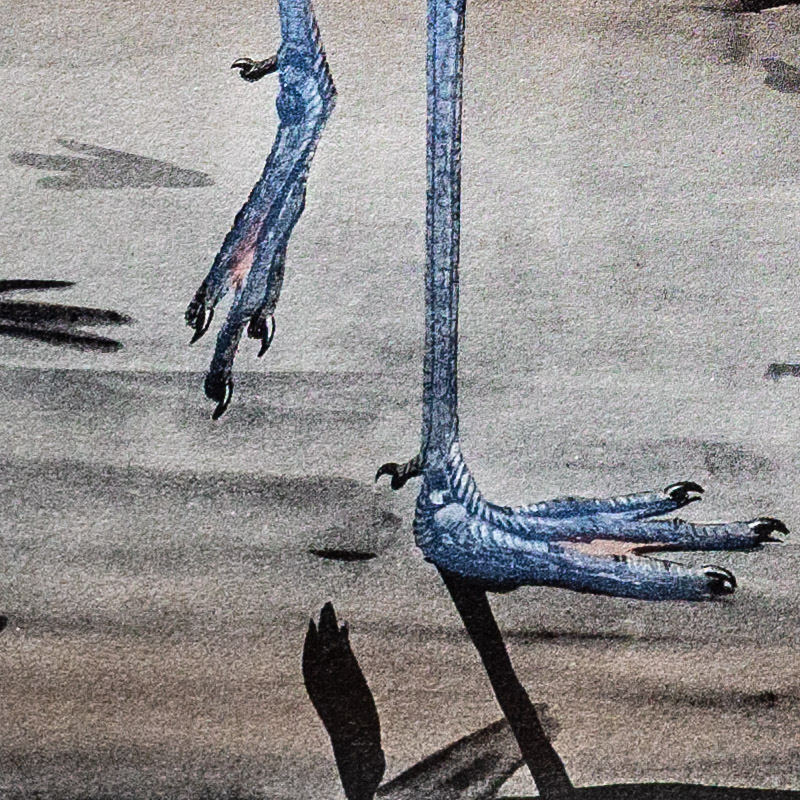
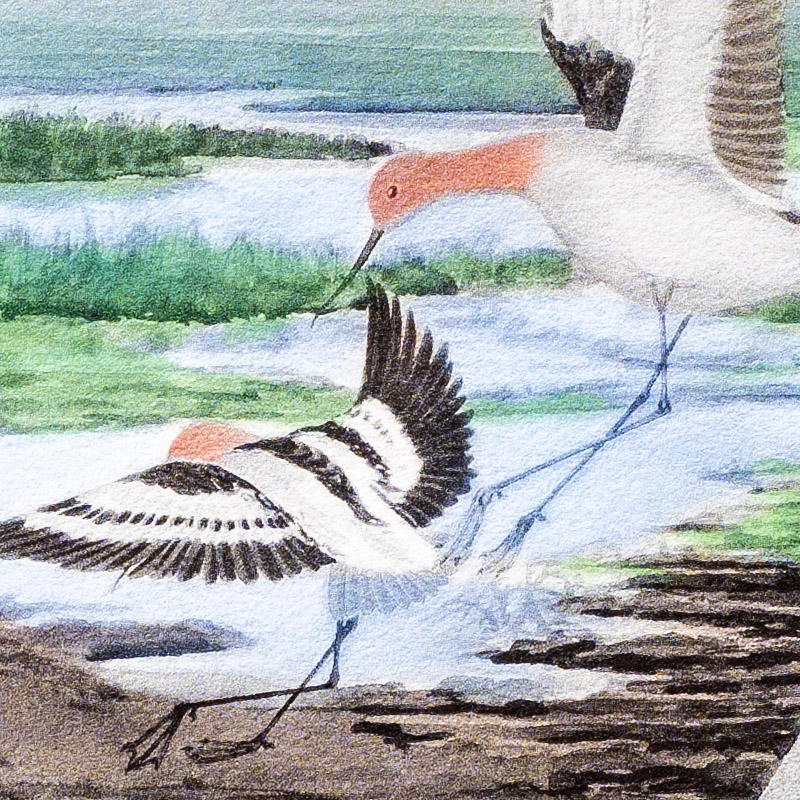

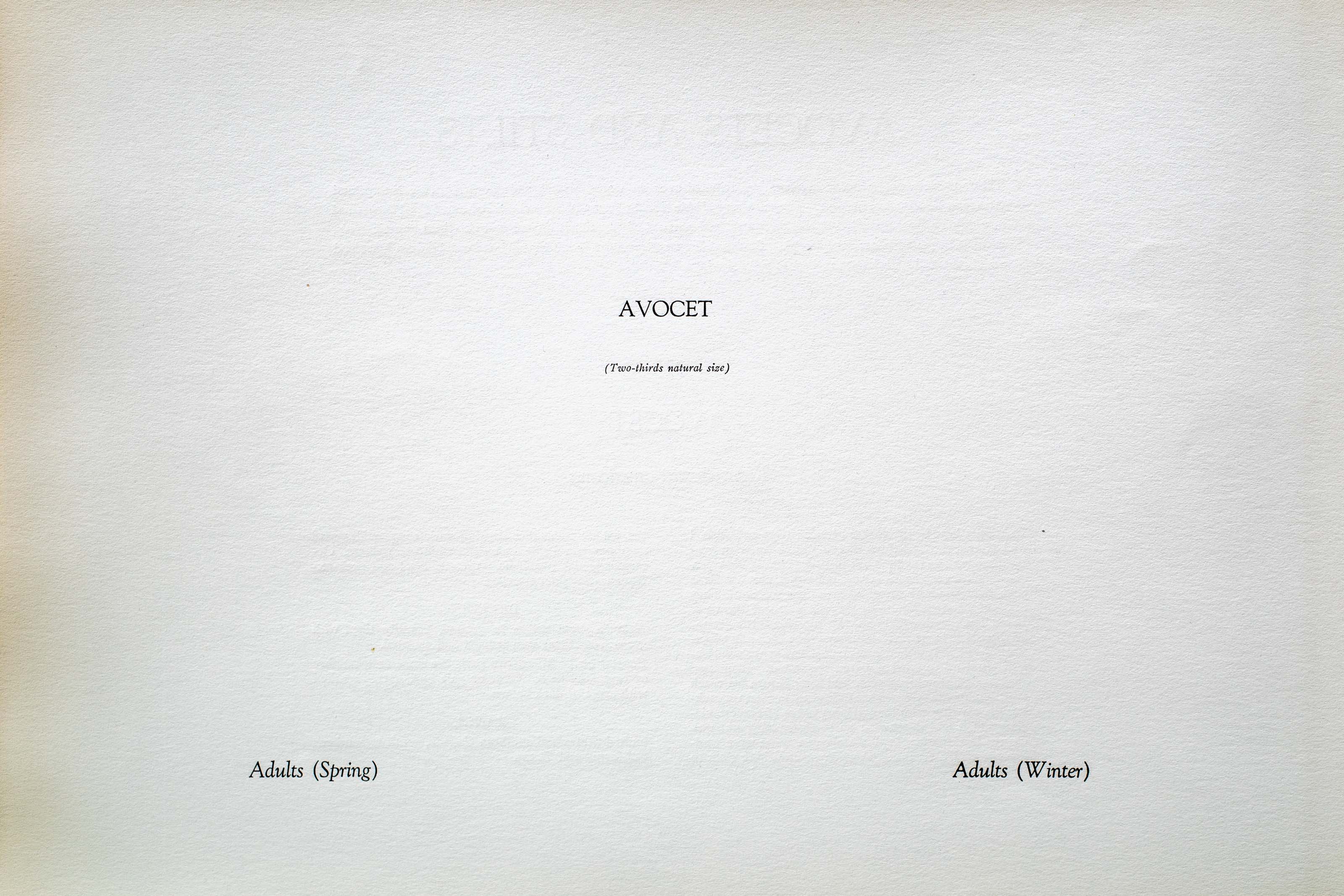
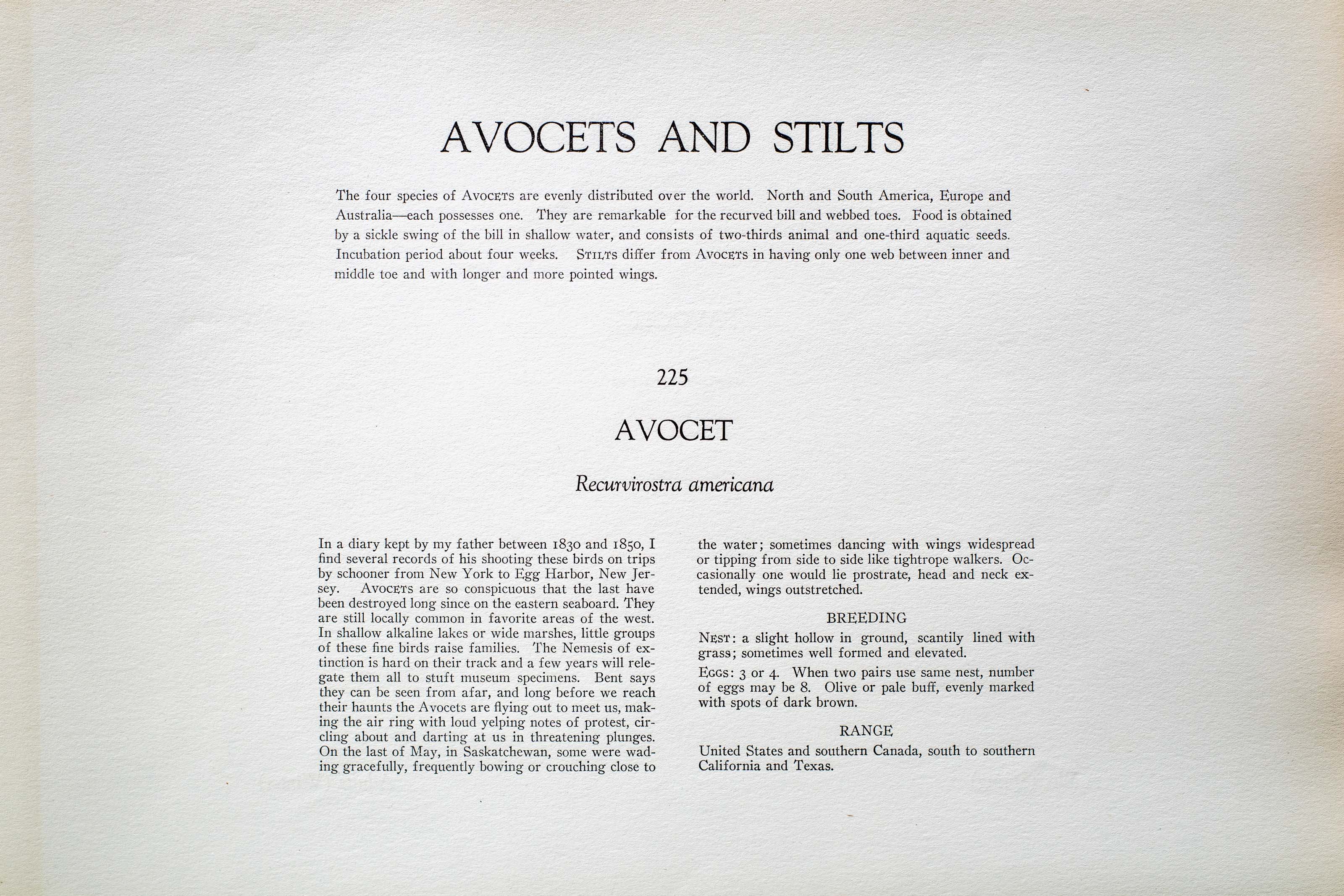

Unknown
1930
4
225
A team of dedicated board members, volunteers, and student interns has published every page in Volume 9. This volume includes 360 images of paintings and lyrical descriptions of birds, now available online for everyone to enjoy anywhere in the world. This is a monumental task. Each volume requires approximately 400 hours to photograph, edit, transcribe, catalog, and publish online. We need your support to complete this work.
If you're tech-savvy, have a good eye, are meticulous with details, and love structured data, please consider volunteering by emailing us at hello@rexbrasher.org.
We encourage all bird lovers and supporters to consider a monetary donation to support our mission to make Rex's work available for everyone. You can provide a one-time or recurring donation online.
In a diary kept by my father between 1830 and 1850, I find several records of his shooting these birds on trips by schooner from New York to Egg Harbor, New Jersey. AVOCETS are so conspicuous that the last have been destroyed long since on the eastern seaboard. They are still locally common in favorite areas of the west. In shallow alkaline lakes or wide marshes, little groups of these fine birds raise families. The Nemesis of extinction is hard on their track and a few years will relegate them all to stuft museum specimens. Bent says they can be seen from afar, and long before we reach their haunts the Avocets are flying out to meet us, making the air ring with loud yelping notes of protest, circling about and darting at us in threatening plunges. On the last of May, in Saskatchewan, some were wading gracefully, frequently bowing or crouching close to the water; sometimes dancing with wings widespread or tipping from side to side like tightrope walkers. Occasionally one would lie prostrate, head and neck extended, wings outstretched.
NEST: a slight hollow in ground, scantily lined with grass; sometimes well formed and elevated.
EGGS: 3 or 4. When two pairs use same nest, number of eggs may be 8. Olive or pale buff, evenly marked with spots of dark brown.
United States and southern Canada, south to southern California and Texas.